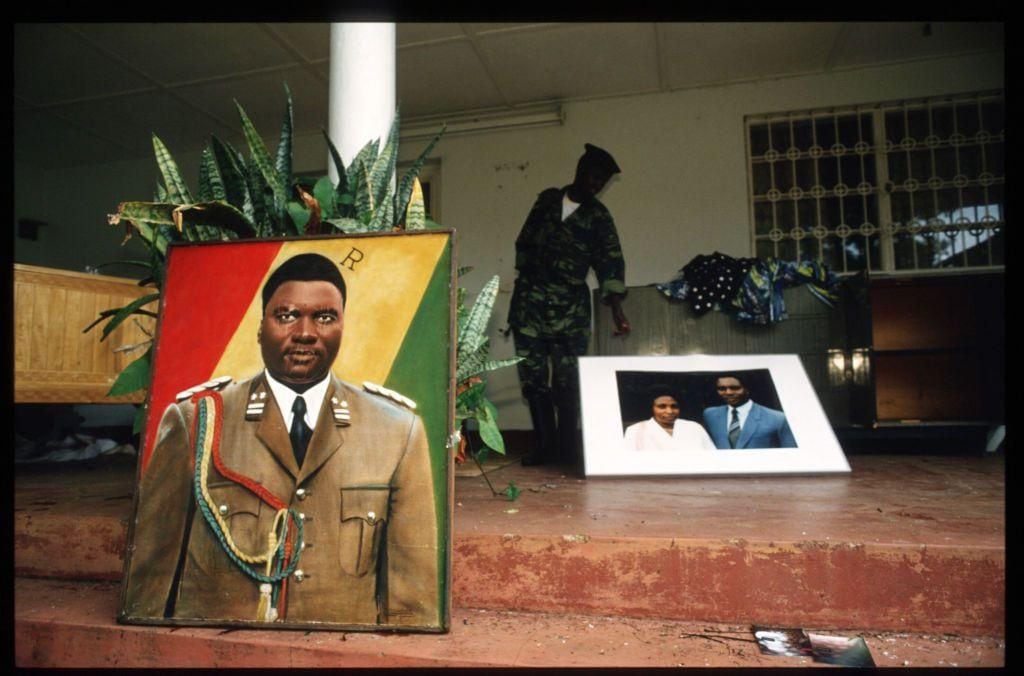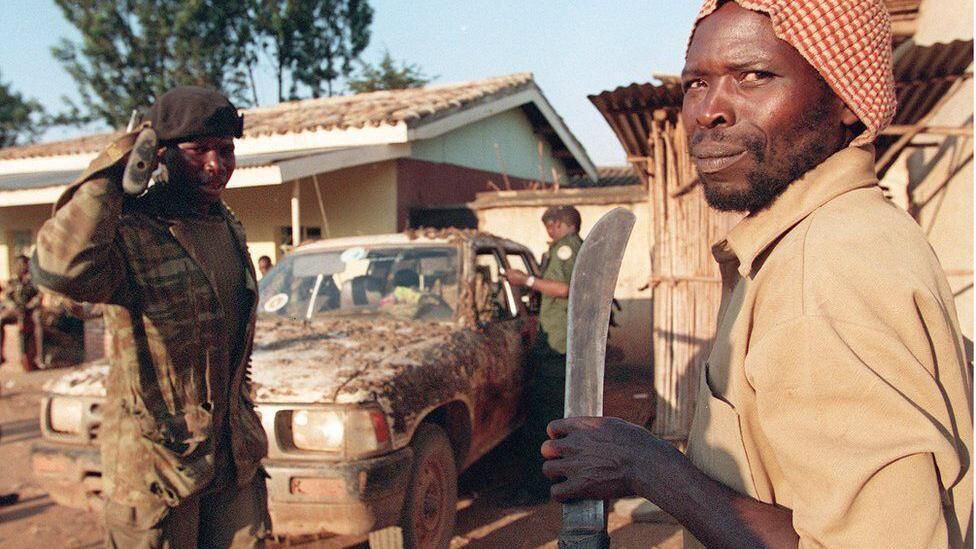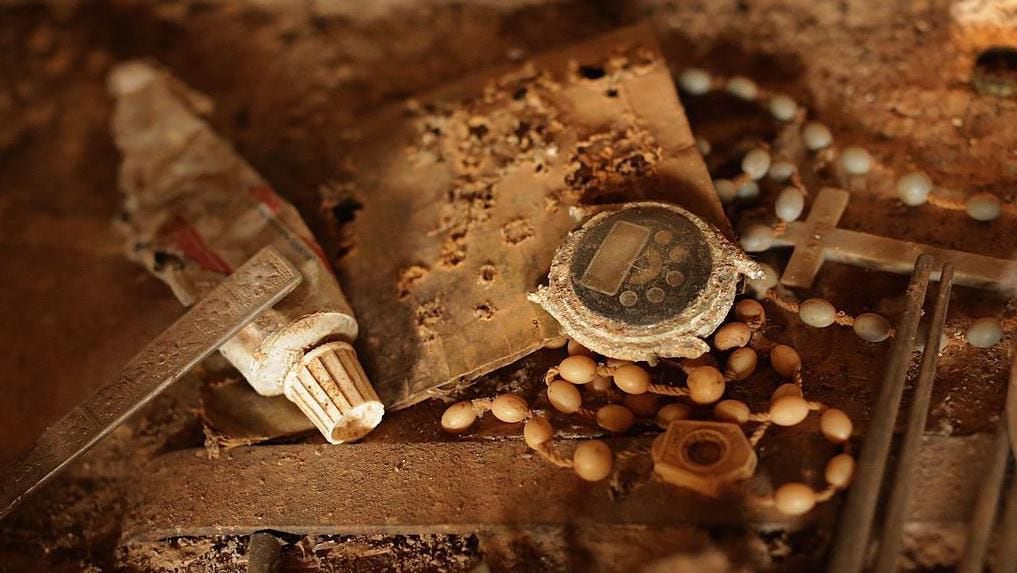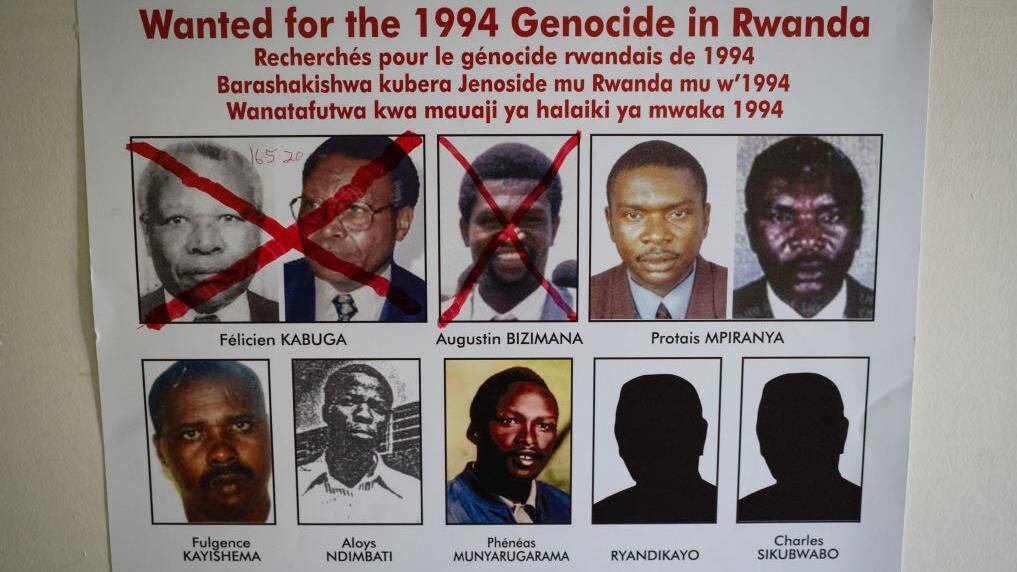In 1994, in just 100 days, around 800,000 people were murdered in Rwanda by extremists from the Hutu ethnic group. The massacre was an attempt to exterminate the minority Tutsi population and it is estimated that approximately 70% of them died.
What was Rwanda like before the genocide?
About 85% of Rwanda’s population are Hutus, but the Tutsi minority has long dominated the country.
The division of Rwandan citizens by ethnicity It is a legacy of the colonial period.
LOOK: 5 keys to understanding Mexico’s diplomatic crisis with Ecuador after the police raid on the Mexican embassy in Quito
When the Belgians took over Rwanda at the end of the 19th century, they classified the population according to the group they belonged to, creating identifications that indicated who was Hutu and who was Tutsi.
Alongside this identification, a division was also created in which the Tustis were identified as a dominant and superior ethnic group that had better jobs, relegating the Hutu majority to a subordinate and submissive group.
The divisions of the colonial order They were exacerbating tensions and resentments in Rwandan society.
Ethnic differences came to a head during Rwanda’s independence, when in 1961 the Hutu majority took control of the government, abolishing the Tutsi monarchy and declaring the Republic of Rwanda.
Dozens of Tutsis fled to neighboring countries, including Uganda. There, Tutsi exiles formed a rebel group, the Rwandan Patriotic Front (RPF).
Your main objectives They were the overthrow of the Rwandan government and the end of the exile of the Tutsi.
In 1990, RPF fighters invaded the country, triggering a civil war with the Hutus in a struggle that lasted for years until an agreement was reached in 1993.

With the agreement, the civil war ended and a transitional government composed of Hutus and Tutsis was created, led by Hutu Juvenal Habyarimana.
But on April 6, 1994, a plane carrying President Habyarimana and his Burundian counterpart, Cyprien Ntaryamira, also Hutu, was shot down by two ground-launched missiles, killing everyone on board.
Responsibility for the attack remains controversial. Hutu extremists blamed the RPF. The RPF said the attack was carried out by Hutu extremists who opposed negotiations with the RPF and that the plane was shot down as an excuse to carry out genocide.
Immediately Hutu extremists began a well-organized campaign of massacre against the Tutsis.

How was the genocide carried out?
It was meticulously organized. Lists of opponents to the government were drawn up and handed over to the Hutu militias, who went out to kill the Tutsi residents along with all their families.
Moderate Hutus who opposed the government were also murdered.
In the next three months, neighbors killed other neighbors and there were even husbands who killed their Tutsi wives, saying that if they refused, they would be the ones who would die.
At the time, identification cards in Rwanda included the ethnic group of the inhabitants, so militias set up roadblocks where Tutsis were rounded up and killed, often with machetes that most Rwandans used to keep at home.
Thousands of Tutsi women were kidnapped and held as sexual slaves.

Why was it such a cruel and violent event?
Rwanda It has always been a tightly controlled society, organized like a pyramid from each district to the top of the government.
The then ruling party, the MRND, there was a young wing called Interahamwe, which transformed into multiple militias to carry out the massacre of the Tutsi.
Weapons and target lists were given to local groups, who knew exactly where to find the victims.
Hutu extremists created a radio station, RTML (Rádio Televisão Livre de Mil Colinas), and newspapers that circulated propaganda and hate speech against the Tutsis, urging people to “eliminate the cockroaches”, that is, kill the Tutsis.
The names of important people who would be murdered were read over the radio.
Even priests and nuns were later convicted of killing people, including some who sought refuge in churches.
By the end of the 100-day massacre, around 800,000 Tutsis and moderate Hutus had been killed.

Did the international community try to prevent the genocide?
The UN and Belgium had forces in Rwanda, but the UN mission was not ordered to stop the killing.
A year earlier, several American soldiers were killed in a battle in Somalia and dragged through the streets of Mogadishu by angry Somalis.
The event, which was broadcast on American television to national outrage, led Washington to be determined not to become involved in another African conflict, so the Americans did not intervene in Rwanda.
For their part, the Belgians and UN peacekeepers withdrew from Rwanda after 10 Belgian soldiers died in the massacre.
The French, allies of the Hutu government, sent a special force to evacuate their citizens and then established a supposedly safe zone, but they were accused of not doing enough to stop the killing in that area.
Paul Kagame, the current president of Rwanda, accused France to support those who carried out the massacresan accusation Paris denied.

How did the massacre end?
The RPF, which was well organized and supported by the Ugandan army, gradually conquered more territory until July 4, 1994, when its forces marched towards the capital, Kigali.
About two million Hutus, both civilians and some of those implicated in the genocide, fled across the border to the Democratic Republic of Congo, then called Zaire, fearing revenge attacks. Others went to neighboring Tanzania and Burundi.
Rights groups say RPF fighters They killed thousands of Hutu civilians when they took power and who continued to kill Hutus when they entered the Democratic Republic of Congo to persecute members of the Interahamwe militias. The RPF denies this.

What was the impact on neighboring countries?
In the Democratic Republic of Congo, where almost a million Rwandans have taken refuge, one of the worst cholera epidemics the country has ever seen.
The UN estimates that around 12,000 people have died from the disease and aid groups have been accused of letting much of their assistance fall into the hands of Hutu militias.
The RPF, which was already in power in Rwanda, welcomed armed groups that fought against both the Hutu militias and the Congolese army, which was aligned with the Hutus.
Rwandan-backed rebel groups eventually marched on the DRC capital, Kinshasa, and overthrew the government of Mobutu Sese Seko, installing Laurent Kabila as president.
But the new president’s reluctance to confront the Hutu militias triggered a new war that involved six countries and led to the creation of numerous armed groups that fought for control of the mineral-rich country.
It is estimated that five million people died as a result of the conflict that lasted until 2003with some armed groups still active in areas close to the border with Rwanda.

Was anyone tried after the genocide in Rwanda?
The International Criminal Court was created in 2002, long after the genocide in Rwanda, so it was unable to prosecute those responsible.
Instead, the UN Security Council created the International Criminal Tribunal for Rwanda in the Tanzanian city of Arusha to prosecute the leaders.
A total of 93 people were charged andAfter long and expensive trials, dozens of high-ranking officials from the former regime were convicted of genocide, all of them Hutus.
In Rwanda, community courts, known as gacaca, were created to speed up the processing of hundreds of thousands of genocide suspects awaiting trial.
Around 10,000 people died in prison before being brought to justice.
For a decade, until 2012, 12,000 gacaca courts met once a week in villages across the country, often outdoors, in a market or under a tree, hearing more than 1.2 million cases.
Its aim was to achieve truth, justice and reconciliation among Rwandans, as “gacaca” means to sit down and discuss an issue.

What is Rwanda like now?
President Kagame was praised for transforming the small, devastated country through policies that encouraged rapid economic growth.
He also tried to transform Rwanda into a technology hub.
But his critics say the president does not tolerate dissent and several opponents suffered inexplicable deaths, both at home and abroad.
Obviously, the genocide remains a very sensitive issue in Rwanda and it is illegal to talk about ethnicity.
The government says this is to prevent hate speech and further bloodshed, but some say the move prevents true reconciliation.
Some of Kagame’s critics were accused of inciting ethnic hatredWhat they say is a way of marginalizing them.
Kagame won a third term in the last 2017 elections with 98.63% of the vote.
Source: Elcomercio
I am Jack Morton and I work in 24 News Recorder. I mostly cover world news and I have also authored 24 news recorder. I find this work highly interesting and it allows me to keep up with current events happening around the world.

:quality(75)/cloudfront-us-east-1.images.arcpublishing.com/elcomercio/HR6UKYMCI5BQLMLSPFQ5IT5XHY.jpg)

:quality(75)/cloudfront-us-east-1.images.arcpublishing.com/elcomercio/SSS6YRLN3NAMDNDZD7OMXFRLCI.jpg)
:quality(75)/cloudfront-us-east-1.images.arcpublishing.com/elcomercio/VW5TBOY3PRBOBD72NWEWN34ZBE.jpg)

:quality(75)/cloudfront-us-east-1.images.arcpublishing.com/elcomercio/USQRAVBPFBD4PLYURKSMCHLVSA.jpg)
